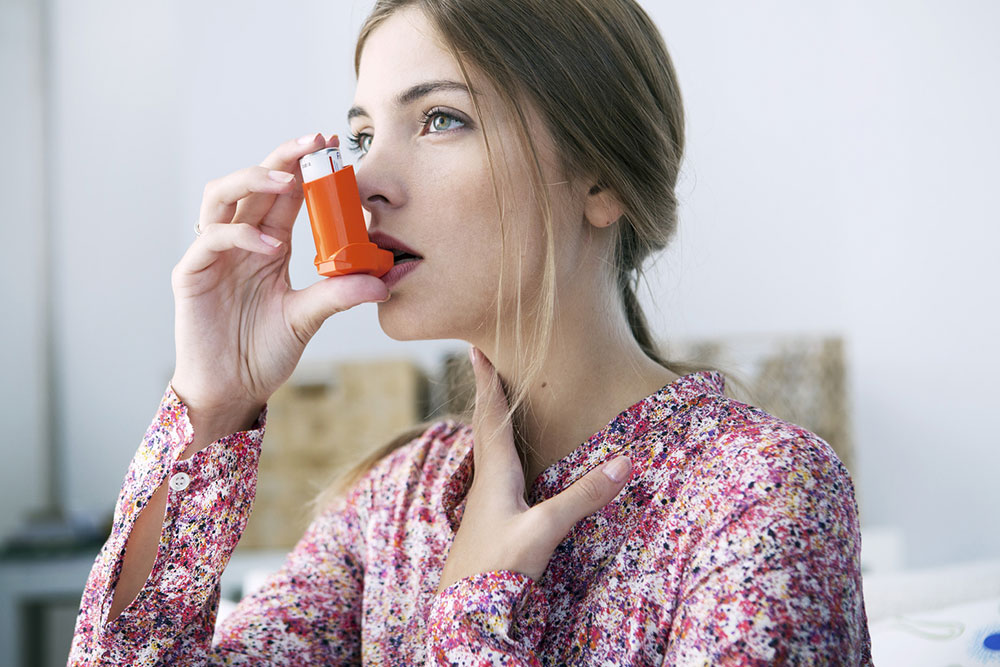
COPD – Types, symptoms, and management
Chronic obstructive pulmonary disease, mostly called COPD, is a respiratory condition affecting millions of individuals in the country. COPD is known to obstruct the airflow in the lungs, significantly impacting one’s quality of life. This brief post takes a closer look at the common symptoms of COPD. It also discusses the available treatment options, including surgical interventions and lifestyle changes, that can help patients manage the discomfort in the long run.
Types of COPD
COPD is an umbrella term used to describe different conditions that affect the airways. The following are three such conditions, each with unique characteristics and triggers:
Chronic bronchitis
Chronic bronchitis is characterized by long-term inflammation of the bronchial tubes. Individuals with the disorder often have a persistent cough with excessive mucus production. This form of COPD is often linked to exposure to irritants.
Emphysema
Emphysema is marked by the gradual destruction of the lung’s air sacs, known as alveoli. It leads to decreased lung elasticity and impaired airflow.
Overlapping COPD-asthma syndrome
Some individuals may experience a combination of COPD and asthma symptoms, leading to a condition known as overlap syndrome. This can complicate diagnosis and treatment.
Recognizing the symptoms
Recognizing the symptoms of COPD is crucial for early diagnosis and intervention. These symptoms often develop gradually and include:
Persistent cough
Chronic cough is a hallmark symptom of COPD. Individuals with the condition frequently cough up mucus, which can be discolored. This persistent cough can be both bothersome and uncomfortable.
Shortness of breath
COPD leads to the narrowing of the airways and the destruction of lung tissue, making it difficult for individuals to breathe comfortably. Shortness of breath, especially during physical activity, is a common symptom.
Wheezing
Wheezing, a typical high-pitched whistling sound that occurs during breathing, is a result of narrowed airways. It is a prominent symptom that should not be ignored.
Chest tightness
Many individuals with COPD experience a feeling of tightness or discomfort in the chest, which can be distressing.
Frequent respiratory infections
Patients are more susceptible to respiratory infections like bronchitis and pneumonia due to compromised lung function.
Fatigue
The effort required to breathe with COPD can lead to chronic fatigue, making it challenging for individuals to engage in daily activities.
Barrel chest
In advanced emphysema cases, individuals may develop a barrel-shaped chest due to the increased size of the lungs.
Swelling in the ankles and legs
Some people with COPD may experience peripheral edema, causing swelling in the ankles and legs due to impaired circulation.
Depression and anxiety
COPD can have a profound impact on one’s mental health, leading to depression and anxiety. These symptoms often stem from the physical limitations the condition imposes.
Clubbing in the fingers
In some instances, the fingers may take on a clubbed appearance, characterized by widening and rounding of the fingertips. This is a late-stage symptom of severe COPD.
Lifestyle alterations to cope with COPD
Patients can make several lifestyle changes to improve their symptoms and overall lung health. A few popular lifestyle changes for COPD include the following:
Pulmonary repair programs
These programs comprise structured exercise routines and education on lung health. They can significantly enhance lung function and overall well-being for COPD patients.
Breathing exercises
Learning proper breathing techniques, such as pursed-lip and diaphragmatic breathing, can help individuals with COPD breathe more efficiently and reduce shortness of breath.
Avoiding irritants
Minimizing exposure to environmental irritants like air pollution, dust, and fumes can prevent exacerbations of COPD symptoms. Using air purifiers and wearing masks when necessary can be helpful.
Eating healthy
A balanced meal plan rich in fruits, vegetables, and lean protein can provide essential nutrients that support overall health. Staying well-hydrated can also help maintain mucus thinness in the airways.
Oxygen therapy to cope with COPD
Oxygen therapy is often recommended for individuals with advanced COPD. It involves using supplemental oxygen to ensure the body receives adequate supply. Oxygen therapy can:
Improve oxygen saturation
Supplemental oxygen increases the oxygen saturation in the blood, reducing the symptoms of hypoxia (low oxygen levels) commonly seen in COPD patients.
Enhance physical activity
Individuals can engage in physical activities and maintain a more active lifestyle with improved oxygen supply.
Reduce breathlessness
Oxygen therapy alleviates breathlessness and allows individuals to breathe more comfortably.
Improve sleep
Many COPD patients experience sleep disturbances due to low oxygen levels. Oxygen therapy can enhance sleep quality and overall well-being.
It’s important for individuals to work closely with their healthcare providers to determine the appropriate oxygen flow rate and duration of therapy.
Surgical interventions for COPD
In severe cases of COPD, surgical interventions may be considered. These procedures are typically reserved for those with advanced stages of the disease when other treatments have proven ineffective. Two common surgical options include:
Lung volume reduction surgery
LVRS removes damaged lung tissue to improve lung function and reduce breathlessness. It is considered for carefully selected candidates.
Lung transplantation
In cases of end-stage COPD, where lung function is severely compromised, a lung transplant may be the only option. This procedure replaces the damaged lungs with healthy ones from a donor.
Surgical interventions come with risks and long recovery periods, so they are only recommended when other treatments are no longer viable. A healthcare provider will evaluate a patient thoroughly before recommending surgery.
COPD is a complex respiratory condition that demands expert attention and management. Understanding the symptoms and various forms of COPD is essential for early detection and effective treatment. Lifestyle modifications, oxygen therapy, and, in extreme cases, surgery can significantly improve the quality of life of individuals with COPD. With proper care and management, those affected can lead fulfilling lives. Collaborating closely with healthcare providers is crucial to tailoring a comprehensive management plan.


